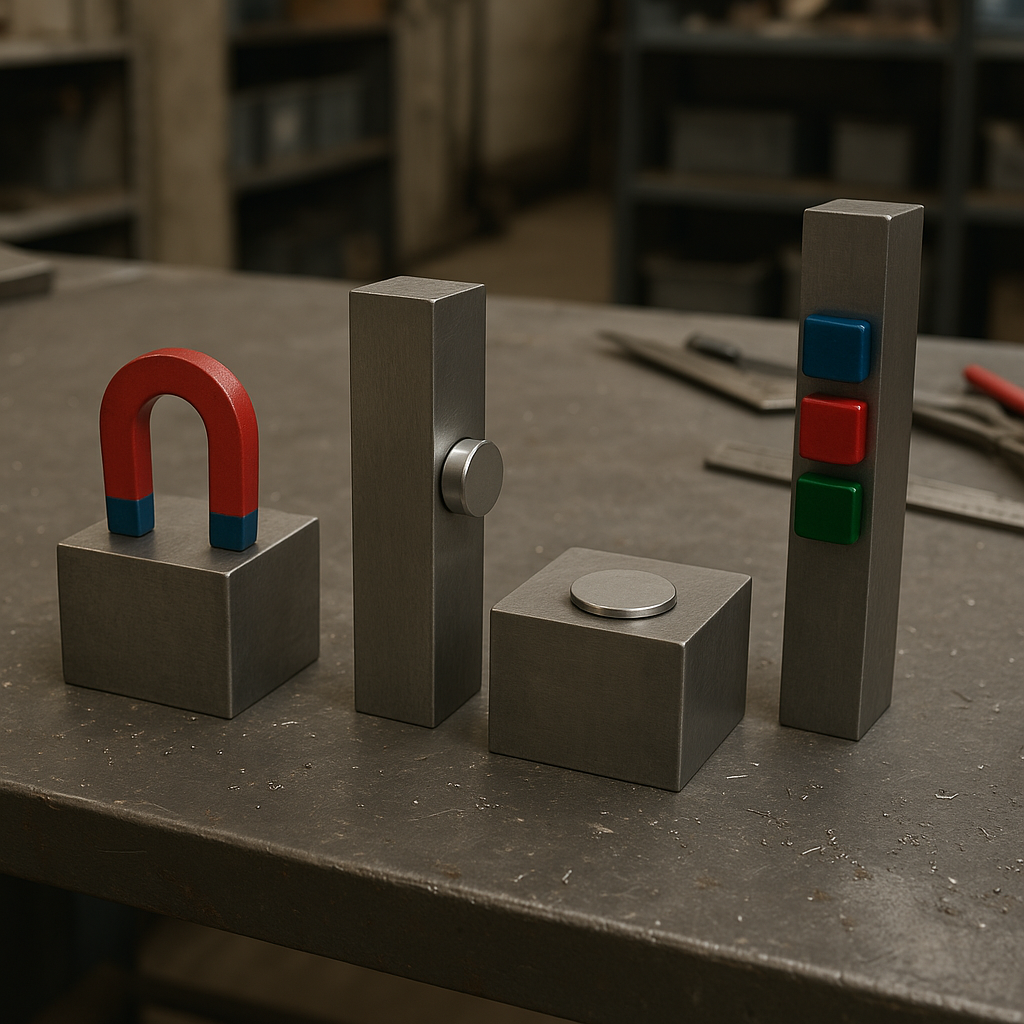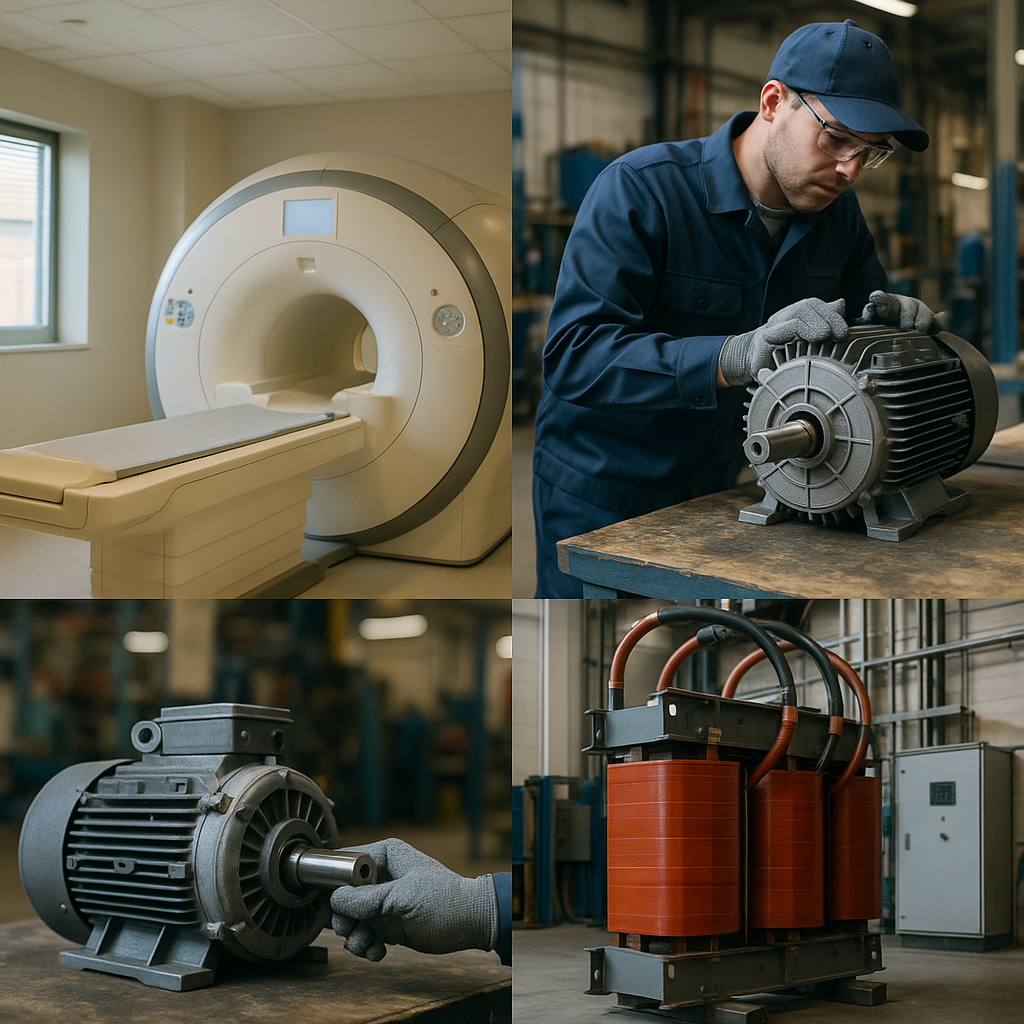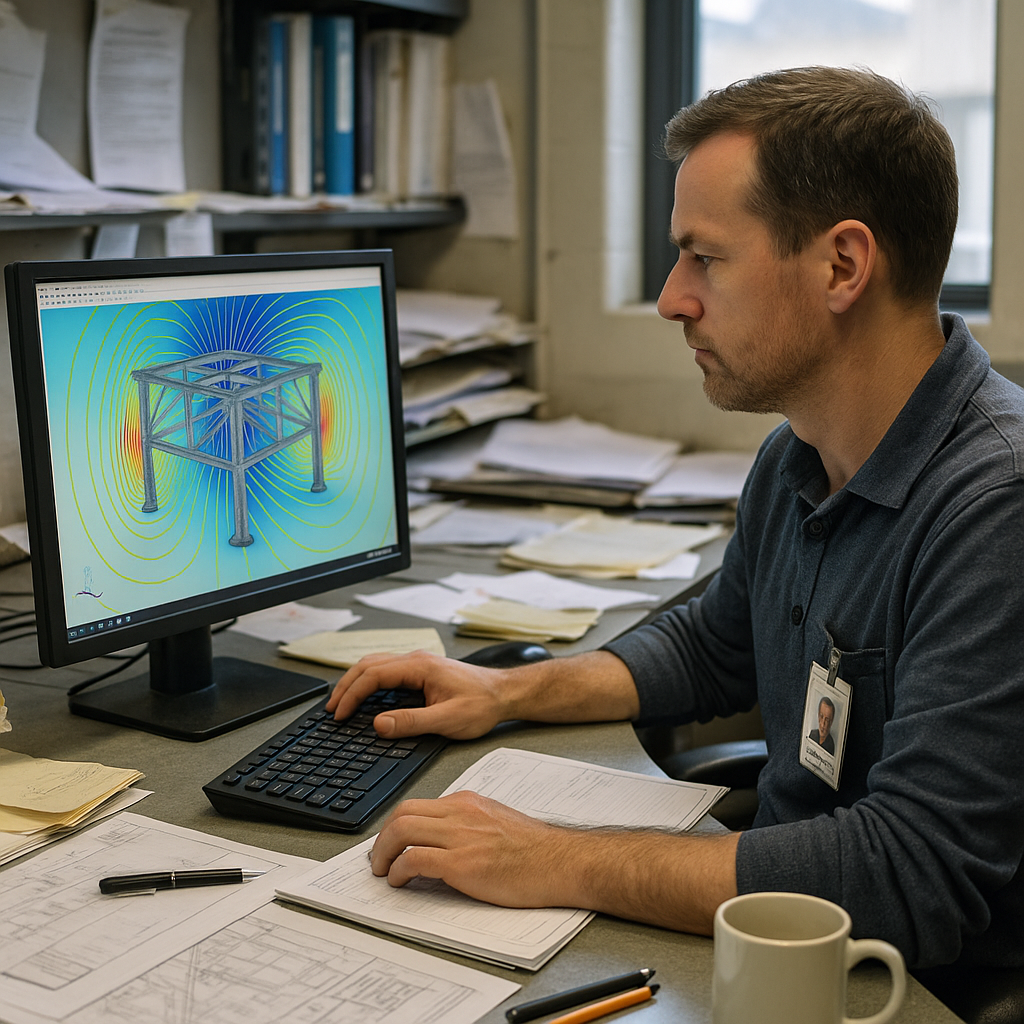5901 Botham Jean Blvd, Dallas, TX 75215
Is Steel Magnetic? Understanding the Basics
May 28, 2025Have you ever held a magnet against different metal objects and wondered why some stick while others don’t? Steel, one of the most common building materials, often confuses people with its variable magnetic properties.
Steel’s relationship with magnetism is complex. Its magnetic properties primarily depend on composition and structure. At its core, steel is an alloy made mostly from iron, which naturally exhibits strong magnetic properties.
Carbon steel, with high iron content and minimal alloying elements, typically displays strong magnetic qualities. The iron atoms in carbon steel align to create magnetic domains, making it readily attracted to magnets. Stainless steel, however, is different. The addition of elements like chromium and nickel can drastically alter its crystal structure, sometimes disrupting those magnetic domains completely.
What Factors Affect Steel’s Magnetic Properties?

Steel’s magnetic properties result from a complex interplay of several key factors. Understanding these factors is crucial for industries that rely on specific magnetic behaviors in their steel components.
Chemical Composition
The chemical makeup of steel fundamentally determines its magnetic response. Iron, being ferromagnetic, forms the backbone of steel’s magnetic properties. Higher iron content typically results in stronger magnetic attraction.
Alloying elements play a significant role in modifying these magnetic characteristics. Elements like nickel and chromium can substantially reduce steel’s magnetic properties, explaining why some stainless steels respond weakly to magnets.
Manganese, silicon, and carbon also influence magnetic behavior. Even small percentages of these elements can alter how steel interacts with magnetic fields. This makes composition control essential for applications requiring specific magnetic responses.
Crystal Structure
Steel’s internal atomic arrangement significantly impacts its magnetic behavior. Ferritic steels, with their body-centered cubic structure, exhibit strong ferromagnetic properties. These steels readily respond to external magnetic fields.
In contrast, austenitic steels have a face-centered cubic crystal structure, typically resulting in non-magnetic or weakly magnetic behavior. The 300-series stainless steels fall into this category, explaining their minimal response to magnets.
Martensitic steel structures offer yet another magnetic profile. Their tetragonal crystal structure produces moderate to strong magnetic properties. This variability makes crystal structure a critical factor in engineering applications.
Heat Treatment Effects
Heat treatment processes can dramatically alter steel’s magnetic characteristics. When steel undergoes heating and cooling cycles, its internal structure transforms, directly affecting magnetic properties.
Annealing generally reduces internal stresses and may enhance magnetic permeability, making the steel respond more efficiently to magnetic fields. Steel recycling facilities consider these properties when sorting and processing scrap materials.
Quenching, the rapid cooling of heated steel, creates martensite. This structure typically exhibits different magnetic properties than slowly cooled steel, making the cooling rate a tool for magnetic property control.
Tempering after quenching can fine-tune magnetic properties. This process relieves internal stresses while preserving much of the hardness achieved through quenching. The temperature and duration of tempering provide precise control over the final magnetic characteristics.
| Steel Type | Crystal Structure | Magnetic Properties | Heat Treatment Effects |
|---|---|---|---|
| Carbon Steel | Body-centered cubic | Strongly magnetic | Varies with cooling rate |
| Ferritic Stainless Steel | Body-centered cubic | Strongly magnetic | Minimal changes |
| Martensitic Stainless Steel | Body-centered tetragonal | Moderate to strong magnetic | Quenching increases magnetism |
| Austenitic Stainless Steel | Face-centered cubic | Non-magnetic | Cold working may induce magnetism |
| Duplex Stainless Steel | Mixed austenitic and ferritic | Moderate magnetic properties | Heat treatment can adjust phase balance |
Microstructural Features
Beyond the primary crystal structure, smaller-scale features affect magnetism. Grain boundaries, dislocations, and precipitates all influence how magnetic domains form and move within the steel.
Grain size particularly impacts magnetic properties. Finer grains generally result in softer magnetic properties with lower coercivity, while coarser grains tend to create magnetically harder materials that retain magnetization more effectively.
Phase composition also matters significantly. Steel containing multiple phases (like ferrite and pearlite) will exhibit magnetic properties that represent a composite of these phases. The relative proportion of each phase determines the overall magnetic behavior.
How Do Different Types of Steel Behave Magnetically?

The magnetic behavior of steel depends on its composition and crystal structure. This property determines how steel reacts to magnetic fields, making certain types suitable for specific industrial applications.
Carbon steel exhibits strong magnetic properties due to its high iron content. The ferromagnetic nature of iron allows carbon steel to attract magnets and retain magnetism, making it ideal for applications requiring magnetic responsiveness.
Ferritic stainless steels contain significant chromium (typically 10.5-30%) but maintain a body-centered cubic crystal structure like pure iron. This structure allows magnetic domains to align easily when exposed to magnetic fields. As a result, ferritic grades such as 430 and 409 display strong magnetic properties, making them suitable for automotive exhaust systems and kitchen appliances.
Martensitic stainless steels combine high strength with magnetic properties. These steels contain moderate chromium levels (11-17%) and higher carbon content, creating a body-centered tetragonal crystal structure after heat treatment. Common grades like 410 and 420 are widely used in surgical instruments, valve components, and cutlery due to their hardness and magnetic responsiveness.
Austenitic stainless steels are typically non-magnetic. With high levels of nickel (8-10%) and chromium (16-26%), these steels form a face-centered cubic crystal structure that prevents magnetic domain alignment. Popular grades like 304 and 316 are used in food processing equipment, chemical tanks, and medical implants where non-magnetic properties are advantageous.
Cold working or specific heat treatments can induce some magnetic response in non-magnetic austenitic steels. This occurs because mechanical stress can transform some austenite to martensite, a magnetic phase. Understanding this is crucial for applications where non-magnetic properties must be maintained.
Duplex stainless steels contain both austenitic and ferritic phases, resulting in moderate magnetic properties. The balance between these phases determines the overall magnetic behavior. These steels, like grade 2205, offer excellent corrosion resistance and higher strength, making them valuable in marine applications and chemical processing equipment.
Heat treatments and manufacturing processes significantly affect the magnetic behavior of all steel types. Processes like quenching, annealing, and tempering can either enhance or reduce magnetic properties by altering the steel’s microstructure. For instance, rapid cooling during quenching can create more magnetic phases in certain steels.
| Steel Type | Magnetic Property | Notes |
|---|---|---|
| Carbon Steel | Strongly magnetic | High iron content |
| Ferritic Stainless Steel | Strongly magnetic | Body-centered cubic structure |
| Martensitic Stainless Steel | Moderate to strong | Body-centered tetragonal structure |
| Austenitic Stainless Steel | Non-magnetic | Face-centered cubic structure |
| Duplex Stainless Steel | Moderate magnetic properties | Mixed austenitic and ferritic phases |
The varying magnetic properties of different steel types enable engineers to select the most appropriate material for specific applications, whether they require strong magnetic response, non-magnetic behavior, or something in between. This versatility makes steel invaluable across numerous industries, from automotive components to medical devices.
What Are the Applications of Magnetic Steel?

Magnetic steel is a fundamental component across multiple industries due to its unique ability to create and respond to magnetic fields. This versatility makes it essential in numerous applications where magnetic properties are needed for functionality and efficiency.
Automotive and Transportation Applications
In the automotive industry, magnetic steel is crucial for electric motors and generators. These components power electric and hybrid vehicles, contributing to improved fuel efficiency and reduced emissions.
Sensors and actuators in modern vehicles rely on magnetic steel for accurate performance. These components help monitor everything from wheel speed to throttle position, enhancing vehicle safety and reliability.
Magnetic steel is also used in structural vehicle components. Its strength and magnetic properties make it ideal for parts requiring both durability and specific magnetic characteristics.
Electrical and Electronics Sector
Transformers heavily rely on magnetic steel cores. These cores channel magnetic flux generated by alternating current, allowing efficient energy transfer between circuits with minimal loss.
Electromagnets in various devices use magnetic steel to quickly magnetize and demagnetize in response to electric current changes. This property is essential for applications ranging from relays to solenoid valves.
Consumer electronics such as speakers and hard drives depend on magnetic steel. The material creates the magnetic fields necessary for sound production in speakers and data storage in hard drives.
Construction and Infrastructure
Cranes and lifting equipment in construction utilize magnetic steel. These machines can quickly attach to and detach from ferrous materials, enhancing efficiency in heavy lifting operations.
Structural elements in building construction sometimes incorporate magnetic steel. Its combination of strength and magnetic properties provides stability and functionality in certain architectural applications.
The durability of magnetic steel makes it suitable for infrastructure projects exposed to harsh conditions. Its resistance to wear ensures longevity in critical structures.
Manufacturing and Tooling
Tools and machining equipment often contain magnetic steel components. Drill bits, cutting tools, and other manufacturing instruments benefit from the material’s magnetic properties and durability.
Precision instruments in manufacturing rely on magnetic steel for positioning and holding workpieces. This capability improves accuracy and efficiency in production processes.
The material’s heat resistance allows it to maintain its magnetic properties under high-temperature manufacturing conditions, valuable in industrial settings.
Recycling and Waste Management
Magnetic separation equipment is fundamental in recycling facilities. Strong magnets made from magnetic steel separate ferrous metals from non-ferrous items during scrap processing.
This separation process significantly improves recycling efficiency. It enables valuable materials to be sorted correctly for reuse, contributing to sustainability efforts.
The magnetic properties of steel allow recycling centers to process large volumes of mixed waste quickly. Without these magnetic separators, sorting would be much more labor-intensive and less effective.
- Electric vehicle motors – enhancing efficiency and power
- Wind turbine generators – converting mechanical energy to electrical
- MRI machines – providing stable magnetic fields for medical imaging
- Industrial electromagnets – lifting and moving heavy metal objects
- Magnetic sorting systems – separating materials in waste management
| Industry | Application |
|---|---|
| Automotive | Electric motors, generators, sensors, structural components |
| Electrical and Electronics | Transformers, electromagnets, speakers, hard drives |
| Construction | Cranes, lifting equipment, structural elements |
| Manufacturing | Tools, precision instruments |
| Recycling | Magnetic separation equipment |
| Renewable Energy | Wind turbine generators |
| Medical | MRI machines |
The renewable energy sector particularly benefits from magnetic steel. Wind turbine generators incorporate magnetic steel components to convert mechanical energy into electrical energy efficiently. The material’s ability to withstand variable loads and environmental conditions makes it ideal for these demanding applications.
Medical equipment also relies heavily on magnetic steel. MRI machines require strong and stable magnetic fields for accurate imaging. The consistency and reliability of magnetic steel ensure these critical medical devices function properly for accurate diagnosis.
Conclusion: The Importance of Understanding Steel’s Magnetic Properties

Understanding the magnetic properties of steel is crucial for industrial applications across various sectors. Steel’s magnetic behavior, influenced by its composition, structure, and processing methods, directly affects material selection and product design. This knowledge allows engineers and manufacturers to develop more efficient sorting processes, improved electromagnetic devices, and advanced industrial equipment.
For businesses involved in metal recycling and processing, understanding these properties is essential for effective material separation and quality control. If your operation includes metal sorting, processing, or recycling, contact Okon Recycling at 214-717-4083 for comprehensive solutions tailored to your specific metal management needs.
